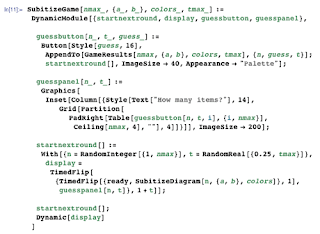For most of us , the video game experience starts at the store and ends on the couch.Few realize that creating a game is a complex and lengthy process. Months of planning and preparation, script writing, casting,character development, cutting-edge technology and massive computing power go into making games.
In the Beginning: Preproduction
Every game begins with a story.Often Story ideas are suggested by game designers themselves or outsiders.They are based on other forms of entertainment like movies.
Once the basic game concept is decided,writers and artists work together on a storyboard. A storyboard consists of rough sketches and technical instructions sequentially organized to depict each scene of the game. It is a visual representation of the story and a reference for the writers, artists and designers just as it would be for a film. But while a film has a single storyline, a video game can have thousands of outcomes. Therefore various levels, or "worlds," of the game must be sketched out.
Creating the Characters
As the storyboard is made, designers begin to create the characters. Rough sketches of major characters are drawn and redrawn until they are perfect. It's important for the artists to refine the characters as much as possible at this stage because it will be costly to make changes later.
Once the character design is finalized, it's time to transform the sketches into controllable 3D characters.Usually it takes about five-seven days to design and program a character.
The sketches are first scanned into the computer. Then, a digital exoskeleton is created to define the character's shape and to give the computer the control points necessary to animate the figure. The more detailed this exoskeleton is, the more realistic the motion of the character will be. Next, layers of "skin" are added, followed by layers of color and texture.
Putting It All in Motion
At this point, the character is basically a digital puppet. The game programmers bring this digital puppet to life by instructing the computer to move the character. Several techniques can be used to do this, depending on the type of game and motion desired. In some games the motions of a human actor are captured using a special suit of sensors to represent the control points of the character's skeleton. These movements then can be mapped onto the character's skeleton to produce ultra-realistic motion.
The Game World
One of the most important aspects of modern game creation is the environment. Subtle touches like reflections in shiny surfaces and varied cloud patterns often go unnoticed by players, but they help create a much more immersive environment. And often such details can propel the story forward.
As the power of home computers rapidly increases, game developers are able to create ever more realistic and complex environments. Levels of detail that were unimaginable only a few years ago are now commonplace. It's hard to imagine the game worlds that await us in the future.
The majority of 3-D objects created for games are made up of polygons. A polygon is an area defined by lines. Each polygon has a set of vertices to define its shape, and it needs information that tells it what to look like.
Coding
Unseen to the user, but making all of the game elements work together, is the code. Code is the set of computer language instructions that controls every aspect of the game. Most games are written with custom code based on the C programming language. A 3-D code engine is almost always used to generate the incredibly complex code necessary for all of the polygons, shadows and textures the user sees on the screen.
Postproduction
Once the game is complete, it enters the postproduction phase. This phase includes testing, review, marketing and finally, distribution.
Testing
The job of the testers is to play the game repeatedly to find all the mistakes, or "bugs." Problems include " fatal bugs” which must be resolved immediately, minor issues which may or may not affect the game's release. When a problem is discovered, a detailed report is sent back to the developers and the error is corrected.
The first version sent to testers is called the "alpha" version, and it is tested to detect any major flaws in the game while they are still relatively easy to fix. Once all of the major flaws are addressed, a "beta" version is released, often to a larger group of testers that sometimes includes the public. The beta version is exhaustively tested, fixed and re-released until the developers are satisfied .
Usually during this testing phase, a copy of the game is sent to the Entertainment Software Rating Board (ESRB)to be given a rating. These ratings are intended to give consumers an idea of the content of the game and its appropriateness for different age groups.
Marketing
Games are big business. According to the Entertainment Software Association, a blockbuster game like Grand Theft Auto: Vice City can cost between $3 million – $5 million to develop, with an addition $10 million for promotion and marketing.
With so much money at stake, the publishers go to great lengths to hype their games. This begins early, often while the game is still being designed. Companies send their designers and public relations staff to trade shows and conventions all over the world to promote their latest games. Demonstration versions, or "demos," are sometimes made available for download from the Internet to offer a sneak peak, and theatrical trailers like those created for Hollywood movies are released. All of this is done so that buyers will be willing to spend $15 to $60 (or more) to be immersed in the imaginary world of that game .
[Read: Future of video games/gaming industry:2020]
[Read: Future of video games/gaming industry:2020]







No comments:
Post a Comment